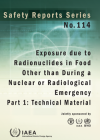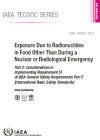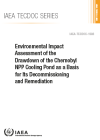The IAEA develops safety standards that establish radiation safety principles and describe the practices associated with the use of ionizing radiation. The application of these safety principles ensures that people are adequately protected from radiation, while its uses can continue to benefit them.
Public
Natural sources of radiation are present throughout the environment. In general, natural radiation sources are difficult to control and it is impossible for the public to completely avoid being exposed to them. In some exceptional cases, for instance the use of radon in homes, cost-effective measures can be taken to reduce exposures. In addition to natural radiation, the testing of nuclear weapons and nuclear accidents, such as those that occurred at Chernobyl in 1986 and Fukushima in 2011 generated additional radiation that is currently also present in the environment.
Artificial sources of radiation
Radiation sources have many beneficial applications in medicine, industry and research, and their use continues to increase. As a result, patients, workers and researchers may be directly exposed to radiation in the course of their medical procedures, work and research, respectively. Members of the public can also be exposed, but normally at very low levels. People can only avoid radiation exposure from these sources if, as a society, we no longer allow their use. While this would not be very sensible, steps can be taken to ensure that an appropriate balance is maintained between risks posed and benefits for individuals and society as a whole from these uses of radiation.








